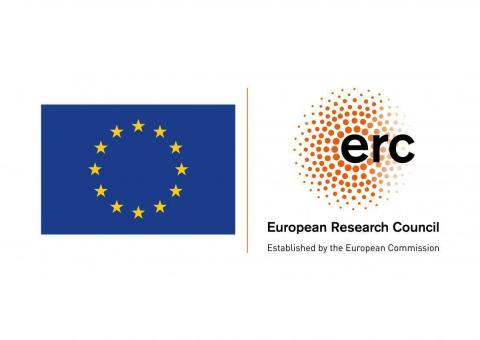
ERC Advanced Grants: three winning projects linked to Université Paris-Saclay
On Thursday 11 April, the European Research Council (ERC) announced the names of the latest winners of its ERC Advanced Grants. The funding is awarded to awarded to researchers who have demonstrated the originality and importance of their work over the past decade. Three projects coordinated by researchers from the Université Paris-Saclay community were among the grant winners.
The European Research Council’s Advanced Grants are among the European Union’s most prestigious and competitive funding programmes. They provide leading senior researchers with the opportunity to pursue ambitious, curiosity-driven projects that could lead to major scientific breakthroughs. Laureates can be awarded up €2.5 million for a period of 5 years.
This year, three projects from Université Paris-Saclay covering the fields of biology, particle physics and neurosciences were awarded funding:
- Purificación López-García is a biologist and CNRS research director at the Ecology, Systemics and Evolution Laboratory (ESE – Univ. Paris-Saclay/CNRS/AgroParisTech). She was awarded an Advanced grant for her project, SYMBEK - Symbiotic interactions at the origin of eukaryotes.
More information to come.
- Maarten Boonekamp is an experimental elementary particle physicist and CEA researcher at the Department of Particle Physics (IRFU/DPHP – Univ. Paris-Saclay/CEA), He was awarded an Advanced grant for his project, Zeptometry - New physics in parity violation: From the Thomson limit to the energy frontier.
Carried out in partnership with Johannes Gutenberg University (Mainz, Germany), the Zeptometry project aims to explore a crucial aspect of particle physics, by carrying out the first quantitative study of the energy dependence of the weak mixing angle, sin²qW, over four orders of magnitude. The weak mixing angle, also known as the Weinberg angle, is a key parameter of the theory of electroweak interaction, part of the Standard Model of particle physics, which establishes a link between the W and Z bosons, two subatomic particles. This parameter is essential because it can be modified by new particles or interactions.
Through a combination of theoretical efforts and innovative experiments, the Zeptometry project intends to accurately map out the energy dependence of the weak mixing angle. The results obtained could pave the way for a deeper understanding of the foundations of physics, from small to large scales.
- Ghislaine Dehaene-Lamberts is a paediatrician and CNRS research director who leads the Neuroimaging team within the Research Unit for Cognitive Neuroimaging (UNICOG – Univ. Paris-Saclay/Inserm/CEA). She was awarded an Advanced Grant for her project, BBThoughts - Dynamics of mental representations and learning in preverbal infants.
The BBThoughts project aims to explore the mental representations of 3-4 month year-old babies by studying how they consciously process and access information using High-Density Electroencephalography (HD-EEG) at the NeuroSpin centre, combined with innovative methodologies such as response variability analysis, frequency tagging and pupillometry.
